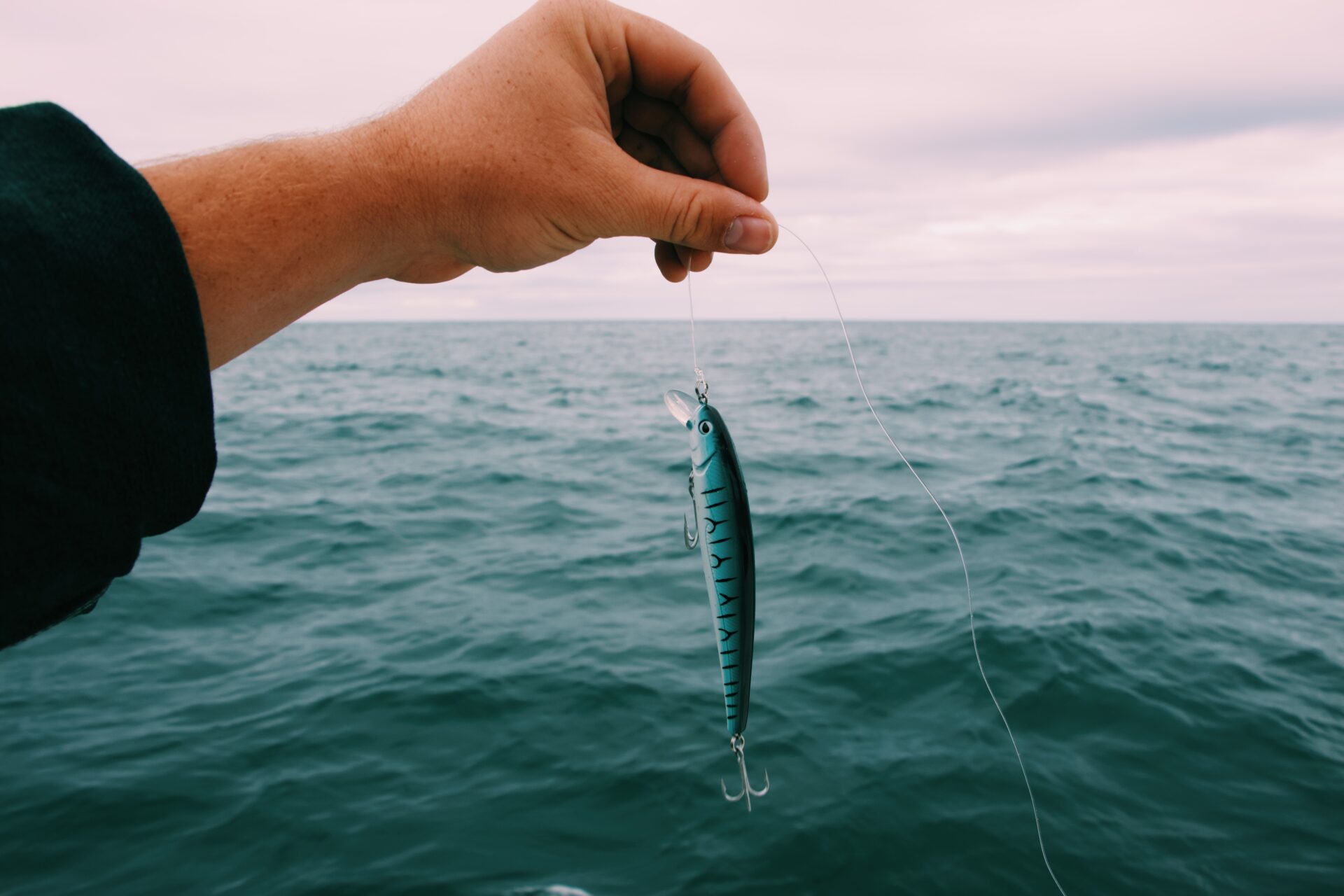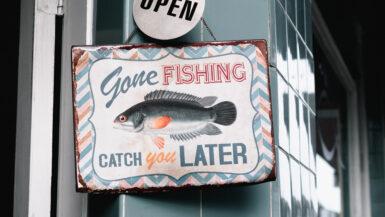Panfish are a popular sportfish for anglers of all ages and skill levels. They can be found in most rivers and are relatively easy to catch. But if you really want to up your panfish game, then you need to know the best techniques for catching them in rivers. In this article, we’ll explore the best ways to land panfish from moving water. With the right knowledge, you can make the most of your time on the river and enjoy the thrill of catching panfish.
Types of River Panfish
River panfish are a great catch for fishermen of all ages. They don’t require special equipment, and they can be found in many rivers across the US. There are several types of common river panfish, each of which can provide an exciting and rewarding fishing experience.
Bluegill
One of the most popular types of river panfish is the bluegill. This species is identifiable by its deep, round body and colorful stripes. Bluegill prefer shallow, weedy areas and can be identified by their unique chirping sound. They are known to be very active and enjoy chasing bait, so tube jigs, worms, and minnows are popular bluegill fishing options.
Perch
Perch are another very common river panfish. They have a slender shape, which makes them easy to identify, and their diet consists of worms, insects, and other small prey. Perch can be caught with small jigs, worms, and other live bait. They are also attracted to artificial lures such as spinners and spoons.
Crappie
Crappie are a popular game fish and a great target for river panfish anglers. They have a unique shape, with a long, thin body and large mouth. Crappie can be caught using a variety of bait such as worms, small jigs, and artificial lures. Crappie like to congregate near cover, so targeting areas with abundant structure and cover can be an effective way to catch them.
Sunfish
Sunfish are another popular river panfish. They are identifiable by their bright colors and large, round shape. Sunfish prefer shallow waters and can be caught using a variety of different baits. Worms, small jigs, and even flies are all effective options for targeting sunfish.
What to Consider When Fishing for Panfish in Rivers
When fishing for panfish in rivers, it is important to consider the size and depth of the river. Panfish generally prefer shallow, weedy areas, so it is best to target areas with plenty of structure and cover. It is also important to use the right equipment, such as small rods and light line, to ensure a successful catch. Additionally, understanding the various types of river panfish and their behavior can help ensure a successful fishing trip.
Tackle and Equipment for River Fishing
River fishing requires gear that is specially designed for the task. There are a variety of rods and reels to choose from, but when it comes to catching panfish, you should look for a lightweight option that is easy to maneuver. Spinning rods and reels make it easy to cast lures and bait into the water, while baitcaster combos are better for heavier lures and heavier line. Both options will work well for river fishing, so it’s up to you to decide which one you prefer.
Using the Right Bait for River Fishing
In rivers, panfish often feed on small insects and larvae, so it’s important to use the right bait. For panfish, the best options are usually small jigs and live bait such as maggots, worms, or feeder minnows. Artificial lures can also be effective, though they are usually less productive than live bait. Regardless of what type of bait you choose, make sure to choose one that is small and lightweight, as larger baits can easily get caught in the weeds and debris that line the river.
The Importance of the Right Fishing Line
When fishing in rivers, it’s important to use a line that is specifically designed for the task. The best lines are usually thin, lightweight monofilament lines that are highly visible in the water but have enough strength to handle any large panfish that you may encounter. It is also important to make sure that the line is not too visible, as panfish will be less likely to bite if they can see the line clearly.
Using the Right Fishing Lures and Plugs
In addition to bait and the right line, you will also need the right lures and plugs to catch panfish in rivers. The best lures are usually small and lightweight, as panfish tend to be small and can easily be scared off by larger lures. Plugs and spinners are also good options, as they can be fished slowly and can entice panfish to bite. When choosing the right lures and plugs, make sure to choose ones that are designed for panfish, as larger lures will not be as effective.
Wearing the Right Fishing Apparel
When it comes to river fishing, it is important to make sure that you are wearing the right apparel. Waders are essential, as they will keep you dry and protected from the cold water. Make sure to choose waders that fit you properly, as ill-fitting waders can be uncomfortable and may not last as long. A waterproof hat, gloves, and boots are also important, as they will help to keep you warm and dry while out on the river.
Understanding River Currents and Structure
Rivers are complex systems, and understanding the current and structure of the river is key to catching panfish. River currents are determined by the gradient, or slope, of the river bed, which determines the speed of the current and its direction. Knowing the current, and how it is affected by the different structures of the river, will help you determine the best spots for panfish.
Factors That Affect River Currents
Certain factors in the river environment can cause changes in the current. For example, obstacles or obstacles in the river such as rocks, logs, or dams may create eddies or areas of slower current. These are great spots for panfish. Another factor that affects the current is the season. During dry seasons, when the water level is lower, the current is usually slower, whereas during wet seasons or flood events, the current is usually much faster.
Using Structure To Your Advantage
When fishing in rivers, it is important to pay attention to the structure of the river. This includes the rocks, logs, weeds, and other obstacles in the river. Different types of structure can provide different benefits for panfish. For example, submerged logs and rocks can provide cover for the fish, while weeds and other debris can provide a place for the fish to hide. Knowing where these structures are in the river can help you find the best spots for panfish.
Identifying Prime Panfish Locations
In order to identify the best locations for panfish, it is important to pay attention to the structure and current of the river. Look for spots where the current is slower, such as near eddies or areas where there are obstacles in the river. Also look for areas where the structure of the river provides cover for the fish, such as submerged logs and rocks. Knowing the current and structure of the river will help you identify the prime panfish spots and give you an advantage when fishing for panfish in rivers.
Techniques for Catching Panfish in Rivers
One of the best techniques for catching panfish in rivers is to use worms and insects as bait. Worms and insects can be found in the mud or along the river’s edge. Boilies, maggots, and grasshoppers are some popular types of bait when fishing for panfish in rivers. To attract the panfish to the bait, try adding a bit of salt or sugar to the water, since panfish have an especially strong sense of smell. Additionally, you can use a float or bobber when fishing with bait, as it helps suspend the worms and insects in the water and improves your chances of catching panfish.
Using Artificial Lures to Catch Panfish in Rivers
For those looking for an alternative to using bait, artificial lures can be a great way to catch panfish in rivers. Spinning lures and spoons are two popular types of artificial lures for panfish in rivers. When using spinning lures, it is important to use small lures, as panfish are typically attracted to smaller prey. Additionally, using a slower and more erratic retrieve when fishing with spinning lures can also be effective when fishing for panfish in rivers. When fishing with spoons, it is important to use a light line, as it will ensure the spoons move naturally when retrieved and make them more attractive to panfish.
Fly Fishing for Panfish in Rivers
Fly fishing is another popular technique for catching panfish in rivers. Generally, a 9 foot, 5X leader with a 2 or 3 weight line is recommended when fly fishing for panfish in rivers. Additionally, small nymphs and wet flies are ideal flies to use when fishing for panfish in rivers. When fly fishing, it is important to present the fly naturally so the panfish are more likely to bite. It is also important to use a slow retrieve to make the fly appear more natural in the water.
Sight Fishing for Panfish in Rivers
Sight fishing for panfish in rivers is a great way to have a successful day of fishing. When sight fishing, look for the panfish in the shallow or clear parts of the river where they can be easily spotted by the angler. Additionally, it is important to make sure you use the right type of bait when sight fishing. Small soft plastics, worms, and even flies are excellent bait for panfish in rivers. Finally, remember to move slowly and not to make too much noise when sight fishing for panfish in rivers, as it will scare them away.
Summary
Fishing for panfish in rivers can be a great way to spend time outdoors and can be a rewarding experience both for the angler and the environment. There are several techniques for catching panfish in rivers, such as using worms and insects as bait, using artificial lures, fly fishing, and sight fishing. Each technique has its own advantages and disadvantages, so it is important to familiarize yourself with each technique before heading out on the river. By following these tips, anglers are sure to have a rewarding day of fishing for panfish in rivers.
Live Bait for River Panfish
Using worms as bait is one of the most effective and widely used techniques for catching panfish in rivers. There are several reasons why worms as bait work so well for fishing panfish in rivers. The first is that worms are found in most river habitats, so they are easily accessible. Worms are also large enough to attract panfish, yet small enough that they don’t require the angler to use large hooks.
Worms can be used in many ways for catching panfish. Maggots and wax worms are both excellent for catching bluegills and crappies, while nightcrawlers are a favorite for catching larger panfish such as bass and walleye. To use worms as bait, simply attach the worm to the hook, allowing enough slack in the line to allow the worm to move naturally in the current.
Utilizing Insects as Live Bait for River Panfish
Insects such as crickets, grasshoppers, and grass shrimp are also great live bait options for catching panfish in rivers. These insects are typically found in shallow, slow-moving rivers and streams. Therefore, they are easy to access and can be used with a small hook. To use insects as bait for panfish, attach the insect to the hook and allow it to move naturally in the current.
Using insects as bait is especially effective when fishing in areas with thick vegetation. These areas usually hold panfish but can be difficult to access. Therefore, using a small hook and insect bait can help you target these areas. When using insects as bait, it’s important to make sure they are alive and active.
Using Minnows as Live Bait for River Panfish
Minnows are also an excellent live bait option for catching panfish in rivers. Small minnows, such as shiners and creek chubs, are great for catching bluegills, crappies, and other small panfish. To use minnows as bait, attach the minnow to the hook, allowing the minnow to move naturally in the current. When fishing in rivers with faster-moving currents, it’s best to use a larger minnow, such as a shad or chub.
Using minnows as bait for panfish in rivers can be especially effective when targeting larger panfish, such as bass and walleye. The larger minnows are a favorite of these larger species and can help you target them in deeper, faster-moving waters.
Best Strategies for Utilizing Live Bait for River Panfish
When using live bait to catch panfish in rivers, it’s important to use the right bait and set up the bait correctly. It’s also important to pay attention to the current conditions, as that can make a big difference in where and how you fish. Additionally, it’s important to choose the right size bait. Smaller baits are better suited for smaller panfish, while larger baits are better suited for larger panfish.
Lastly, it’s important to be patient when fishing with live bait. Panfish can be finicky and won’t always respond to the bait right away. So, it’s important to give the bait time to work before moving on to another spot or trying a different bait.
Finding the Right Fishing Spots
One of the best techniques for catching panfish in rivers is to research where they may be most active. River systems offer numerous habitats and panfish can be found in a wide range of locations, depending on their stage of life. To pinpoint their whereabouts, look for areas of swift or standing currents, clear or murky water, current-worn or overgrown banks, and other features specific to the river.
Interpreting the Conditions
Panfish in rivers often seek out different habitats, depending on the conditions. Knowing how to read the river and identify the spots where panfish like to hang out can be a big advantage when fishing. Look for signs such as debris buildup behind rocks, piles of wood, and other evidence of baitfish activity. Any areas where the water is calm, but still remains deep, often provide ideal panfish habitat.
Checking Water Levels
One factor that greatly affects panfish activity in a river is water level. When the water is low, panfish tend to congregate in deeper pockets of water. As the water level rises, they disperse into smaller pockets and along the banks. Observing water levels over time can help fishermen know when and where to find the most active panfish.
Utilizing Technology
In recent years, technology has made finding the best fishing spots easier than ever before. Fishermen can use specialized mapping software to survey a river and pinpoint potential panfish hotspots. They can also use underwater cameras and sonar to monitor the underwater environment in real time and get a better understanding of what lies beneath the water’s surface.
Incorporating Local Knowledge
Another great way to find fish is to utilize the knowledge of locals. These people spend a lot of time on the river and know the river’s ins and outs. They can provide valuable information on where to look for panfish and can even tell the fishermen what kind of lures the panfish are biting on.
Conclusion
Catching panfish in rivers can be a rewarding and enjoyable experience for anglers of all ages and skill levels. By understanding where to find these fish, what times of the year they are most abundant, and which bait, lures, and techniques work best, anglers can improve their chances of success. This includes using the right equipment, such as rods and lures that are the right size and weight, as well as patches of cover to help attract panfish. By utilizing the best techniques and being mindful of local regulations, anglers can enjoy a pleasant and successful panfish fishing experience.





Leave a reply